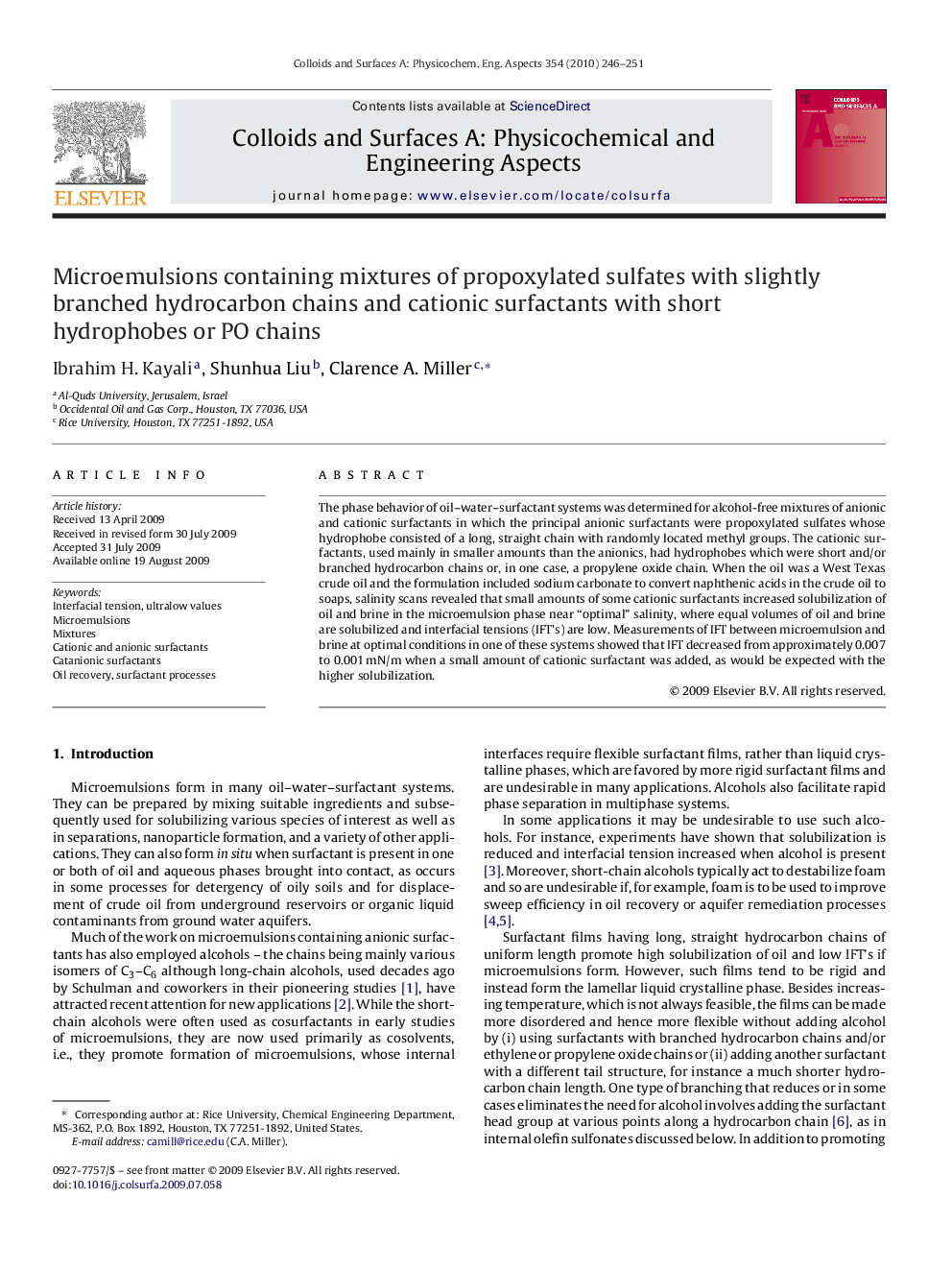| کد مقاله | کد نشریه | سال انتشار | مقاله انگلیسی | نسخه تمام متن |
|---|---|---|---|---|
| 595629 | 1454018 | 2010 | 6 صفحه PDF | دانلود رایگان |

The phase behavior of oil–water–surfactant systems was determined for alcohol-free mixtures of anionic and cationic surfactants in which the principal anionic surfactants were propoxylated sulfates whose hydrophobe consisted of a long, straight chain with randomly located methyl groups. The cationic surfactants, used mainly in smaller amounts than the anionics, had hydrophobes which were short and/or branched hydrocarbon chains or, in one case, a propylene oxide chain. When the oil was a West Texas crude oil and the formulation included sodium carbonate to convert naphthenic acids in the crude oil to soaps, salinity scans revealed that small amounts of some cationic surfactants increased solubilization of oil and brine in the microemulsion phase near “optimal” salinity, where equal volumes of oil and brine are solubilized and interfacial tensions (IFT's) are low. Measurements of IFT between microemulsion and brine at optimal conditions in one of these systems showed that IFT decreased from approximately 0.007 to 0.001 mN/m when a small amount of cationic surfactant was added, as would be expected with the higher solubilization.
Journal: Colloids and Surfaces A: Physicochemical and Engineering Aspects - Volume 354, Issues 1–3, 5 February 2010, Pages 246–251